Launch of a hydraulic unit at the Lesogorskaya HPP
Categories: News | Production
By Pictolic https://pictolic.com/article/launch-of-a-hydraulic-unit-at-the-lesogorskaya-hpp.htmlOn December 18, 2013, the reconstruction of the Vuoksa HPP Cascade was completed in the Leningrad Region. At the Lesogorskaya HPP of TGC-1 OJSC, the last of the 8 hydroelectric units of the Cascade was put into operation. The Vuoksa hydroelectric power stations are the largest source of energy on the Karelian Isthmus - the Russian side includes Svetogorsk and Lesogorsk stations (the other two are located in Finland). Today, their capacity has increased to 240 MW.
(Total 23 photos)
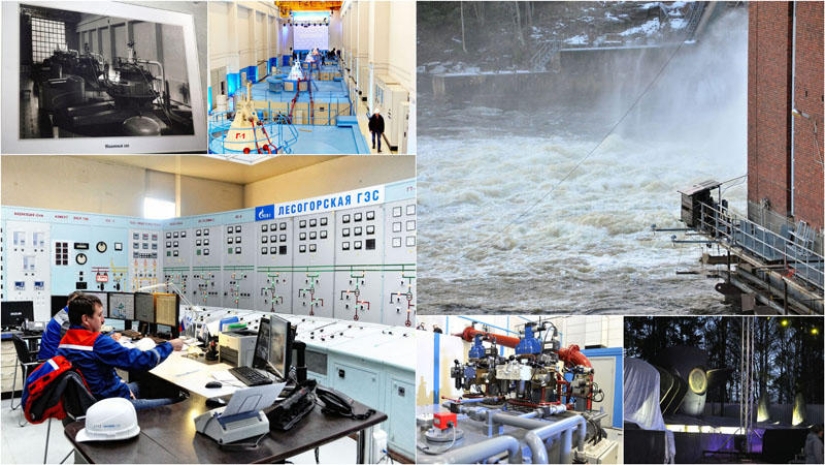
Text and photo Yurkova Oksana
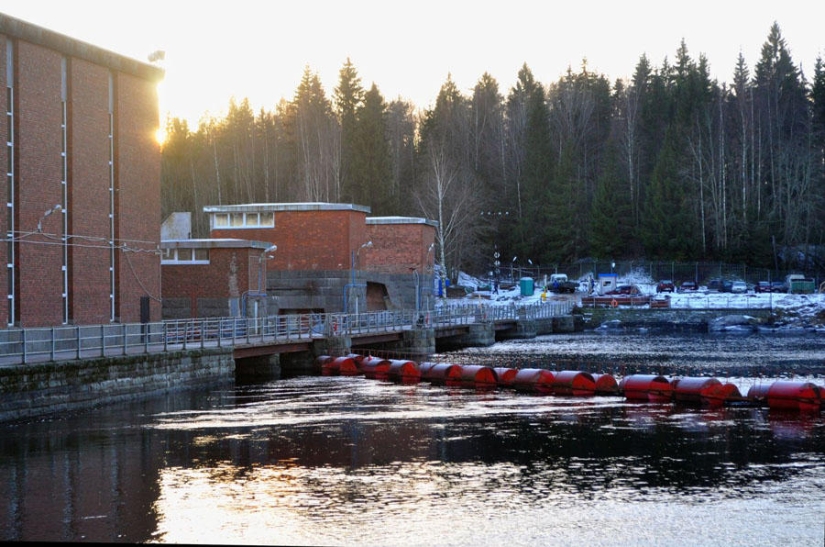 1. The cascade of the Vuoksa HPPs of TGC-1 OJSC was formed in August 1949 on the basis of the Svetogorsk and Lesogorsk hydroelectric power stations. Despite the reliability and stable operation of the equipment, it needed to be replaced. This hydropower facility was the only one that was included in the priority investment program of TGC-1 until 2016. The reconstruction project included the complete replacement of all hydroelectric units with an increase in installed capacity and automation of stations.
1. The cascade of the Vuoksa HPPs of TGC-1 OJSC was formed in August 1949 on the basis of the Svetogorsk and Lesogorsk hydroelectric power stations. Despite the reliability and stable operation of the equipment, it needed to be replaced. This hydropower facility was the only one that was included in the priority investment program of TGC-1 until 2016. The reconstruction project included the complete replacement of all hydroelectric units with an increase in installed capacity and automation of stations.
 2. Lesogorskaya HPP (historical name - Rouhiala HPP) with an installed capacity of 92 MW was built on the Vuoksa River in 1934–1937. In 1940, it entered the Lenenergo energy system, since 1949 - HPP-10 of the Vuoksa HPP Cascade. The HPP supplies electricity to the unified energy system of Russia as part of the generation of OAO TGC-1, as well as to the territory of Finland.
2. Lesogorskaya HPP (historical name - Rouhiala HPP) with an installed capacity of 92 MW was built on the Vuoksa River in 1934–1937. In 1940, it entered the Lenenergo energy system, since 1949 - HPP-10 of the Vuoksa HPP Cascade. The HPP supplies electricity to the unified energy system of Russia as part of the generation of OAO TGC-1, as well as to the territory of Finland.
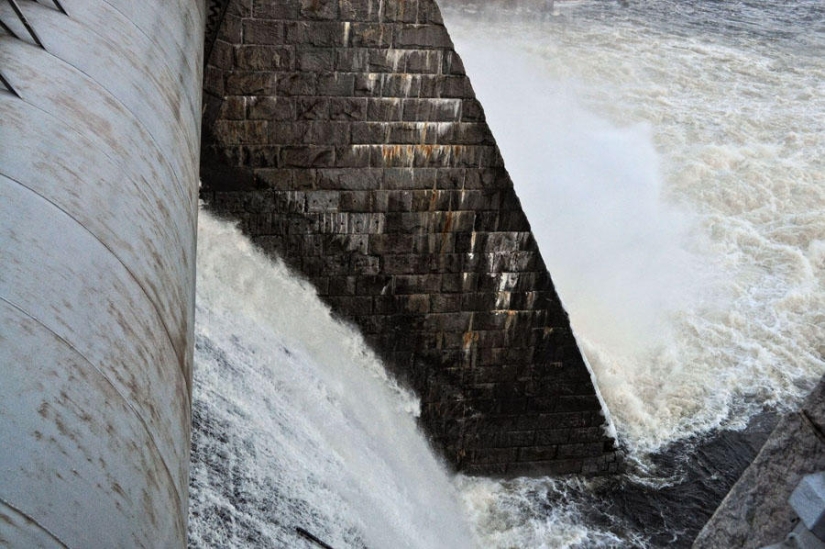 3. The length of the halfway, at the base of which there is a rock, is 151 m. The height of the spillway is 13 meters. In March 1937, the first of the four hydraulic units of Rouhiala HPP was put into operation, and in December 1937 the station was already operating at full capacity.
3. The length of the halfway, at the base of which there is a rock, is 151 m. The height of the spillway is 13 meters. In March 1937, the first of the four hydraulic units of Rouhiala HPP was put into operation, and in December 1937 the station was already operating at full capacity.
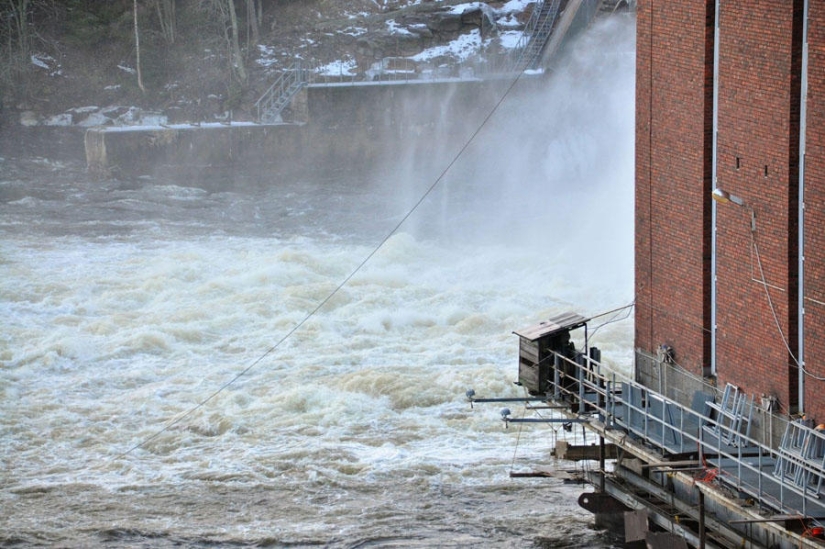 4.
4.
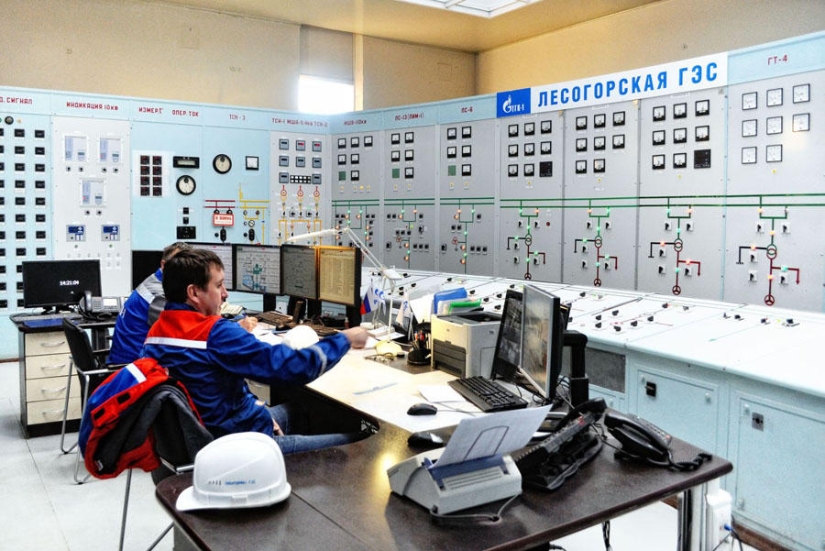 5. Main control panel of the station. From here comes all the control of the station - starting and stopping the units, connecting and disconnecting lines. Here is the main electrical circuit of the station. From the workplace, the shift supervisor picks up the load of the units, sees the power, temperature, vibration state.
5. Main control panel of the station. From here comes all the control of the station - starting and stopping the units, connecting and disconnecting lines. Here is the main electrical circuit of the station. From the workplace, the shift supervisor picks up the load of the units, sees the power, temperature, vibration state.
 6. All processes are visible on the monitors in real time.
6. All processes are visible on the monitors in real time.
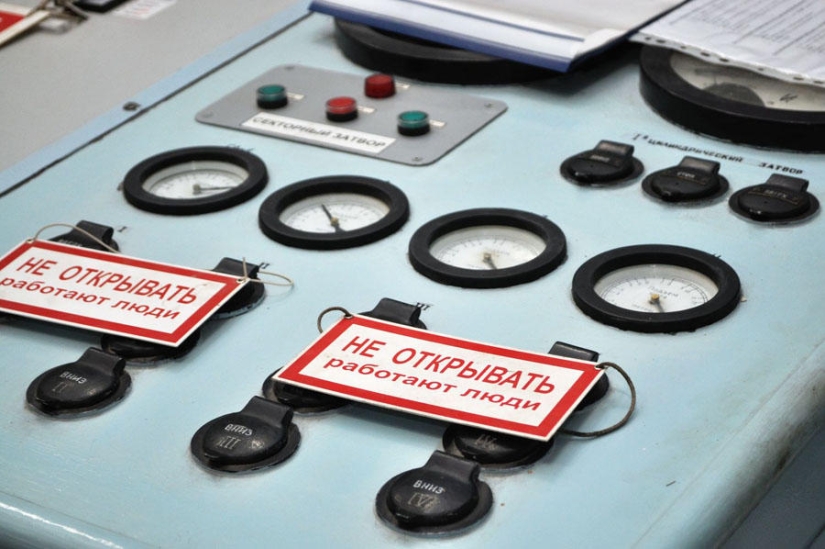 7. After the reconstruction, one click is enough to start up the hydraulic unit or change its operation parameters. A fully automated station control system based on Metso DNA controllers was installed.
7. After the reconstruction, one click is enough to start up the hydraulic unit or change its operation parameters. A fully automated station control system based on Metso DNA controllers was installed.
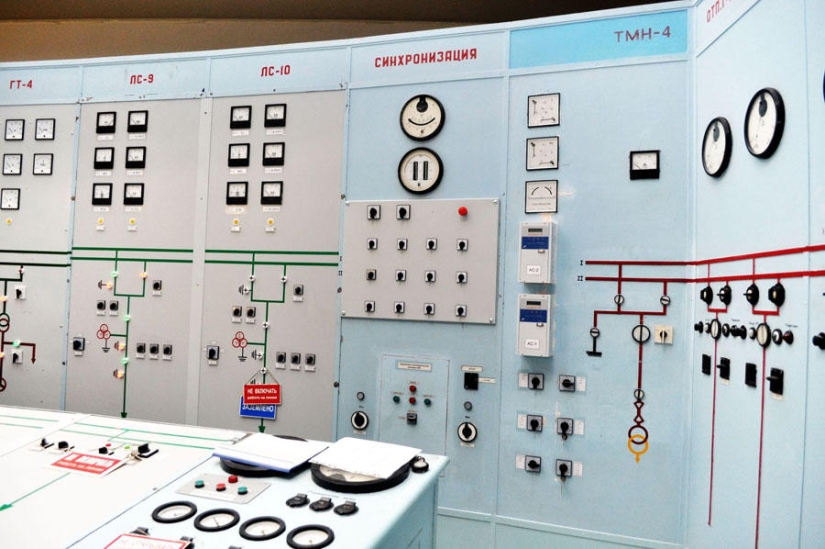 8. Despite the fact that some of the panels are old, the filling is all modern.
8. Despite the fact that some of the panels are old, the filling is all modern.
 9. Engine room. There are 4 units, auxiliary equipment, control, excitation, regulation and protection systems. During the reconstruction of the Cascade of the Vuoksa HPPs, turbines manufactured by the Leningrad Metal Plant and generators from the Elektrosila plant were used.
9. Engine room. There are 4 units, auxiliary equipment, control, excitation, regulation and protection systems. During the reconstruction of the Cascade of the Vuoksa HPPs, turbines manufactured by the Leningrad Metal Plant and generators from the Elektrosila plant were used.
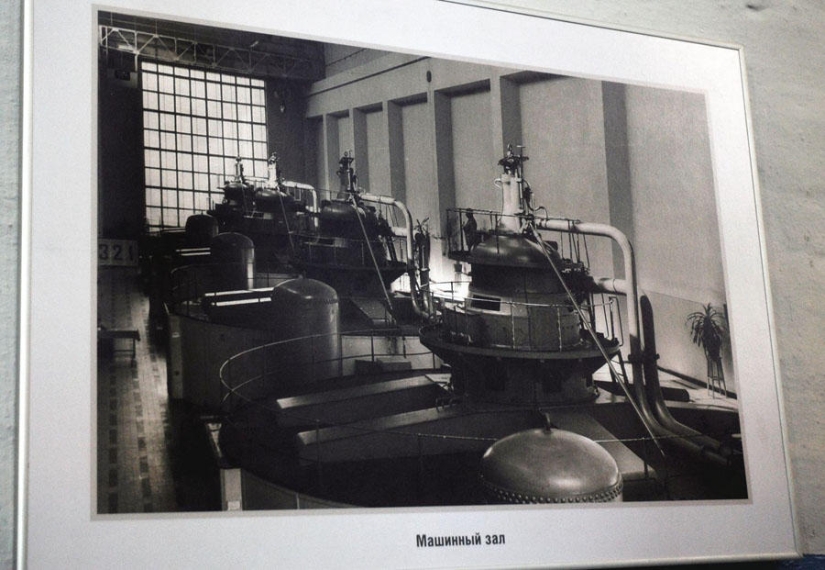 10. This is how the engine room looked before reconstruction.
10. This is how the engine room looked before reconstruction.
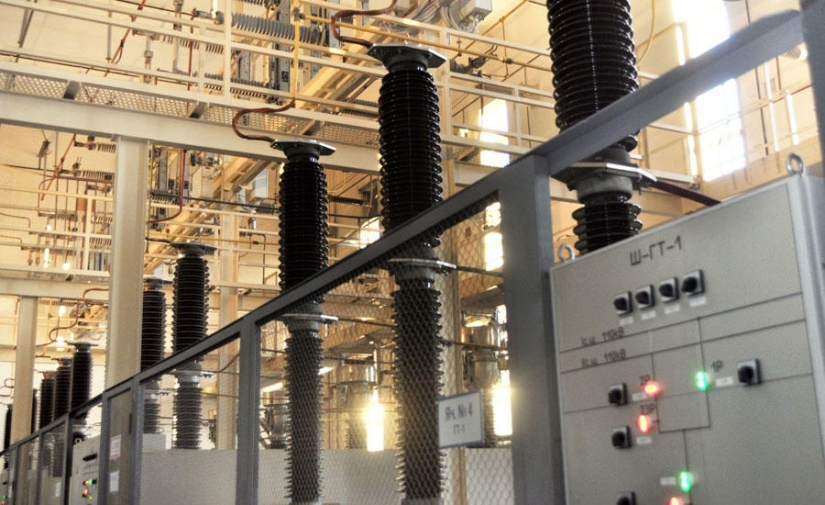 11. Closed switchgear. The power of the device is 110 kV. From here, energy goes to the unified energy system of Russia and to neighbors in Finland in the Imatra region. In the process of reconstruction, all equipment was replaced from splitters to switches.
11. Closed switchgear. The power of the device is 110 kV. From here, energy goes to the unified energy system of Russia and to neighbors in Finland in the Imatra region. In the process of reconstruction, all equipment was replaced from splitters to switches.
 12. This is how ZRU looked before reconstruction. Before the reconstruction, equipment of 1937 was installed here, but it no longer met modern standards, moreover, spare parts were no longer produced.
12. This is how ZRU looked before reconstruction. Before the reconstruction, equipment of 1937 was installed here, but it no longer met modern standards, moreover, spare parts were no longer produced.
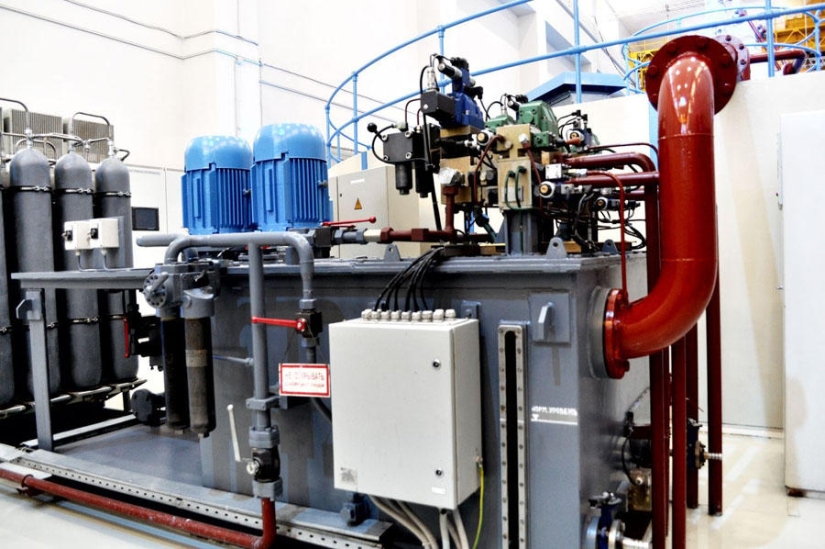 13. Turbine. In the engine room there is a turbine control system - pneumohydraulic accumulators with oil and nitrogen.
13. Turbine. In the engine room there is a turbine control system - pneumohydraulic accumulators with oil and nitrogen.
 14. Due to the compression of nitrogen under a pressure of 12 megapascals, potential energy is obtained, which is transferred to the oil during operation, and the guide vanes and impeller blades are controlled. As a result, the flow of water entering the turbine changes and the power changes. Before the reconstruction, the pressure in the control system was only 2 megapascals, and a larger volume of oil in the control system was used.
14. Due to the compression of nitrogen under a pressure of 12 megapascals, potential energy is obtained, which is transferred to the oil during operation, and the guide vanes and impeller blades are controlled. As a result, the flow of water entering the turbine changes and the power changes. Before the reconstruction, the pressure in the control system was only 2 megapascals, and a larger volume of oil in the control system was used.
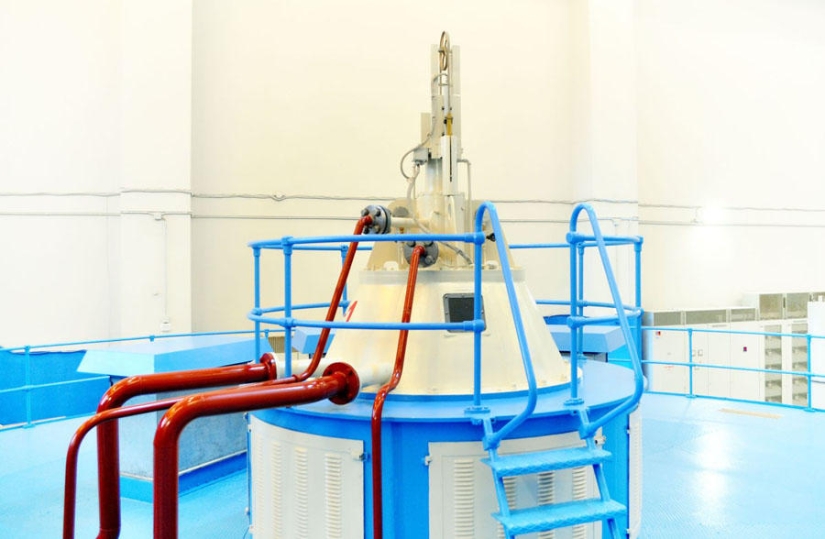 15. Turbine shaft and generator shaft. Everything you see from above is just a tip of the iceberg. The entire main mechanism for obtaining energy is located in the deep "crater".
15. Turbine shaft and generator shaft. Everything you see from above is just a tip of the iceberg. The entire main mechanism for obtaining energy is located in the deep "crater".
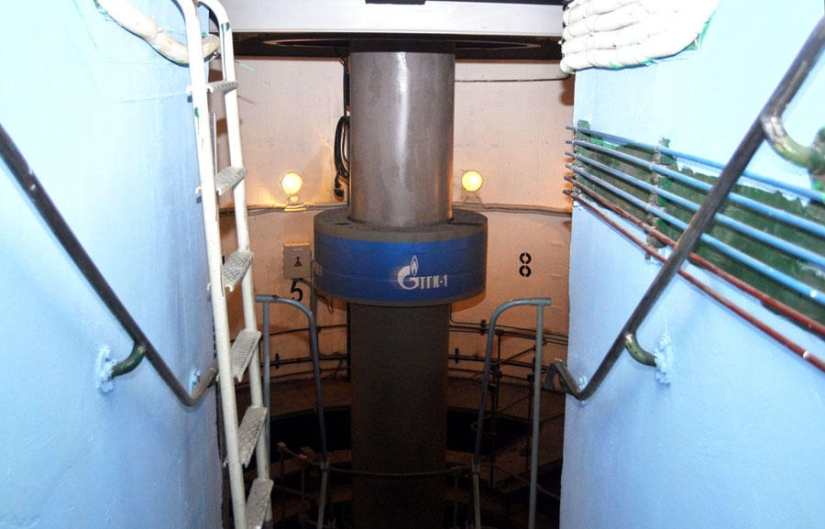 16. The new layout of the installation of equipment made it possible to place the units in existing building structures while maintaining the dimensions of the hydraulic units.
16. The new layout of the installation of equipment made it possible to place the units in existing building structures while maintaining the dimensions of the hydraulic units.
The impeller rotates under the turbine cover. Below, due to the flow of water, energy is transferred to the impeller and fed to the generator. To increase the power of the unit by more than 30%, the number of turbine blades was increased from 4 to 5, in addition, a special mechanism allows you to rotate the blades and change the water flow. The modern design of the turbine completely eliminates the possibility of technical oil entering the Vuoksa River.
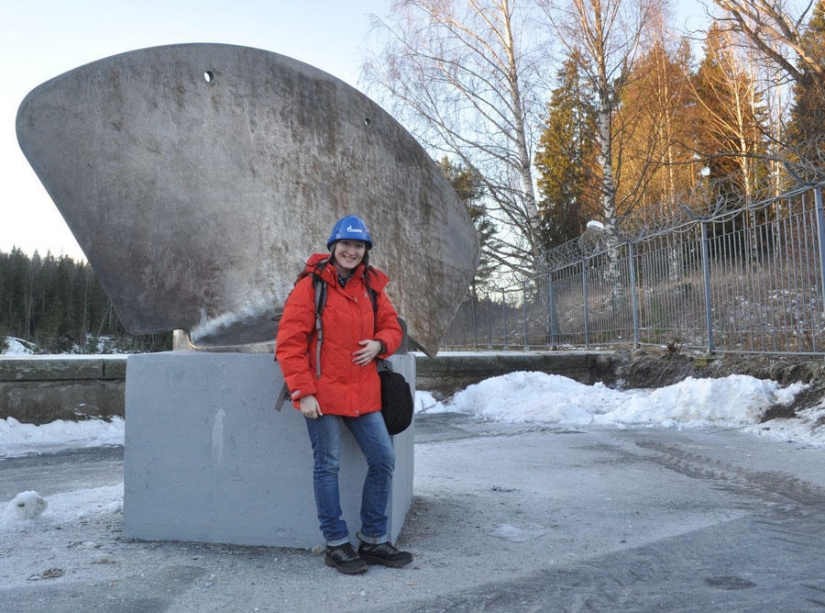 17. Turbine blade from the 30s to understand the size.
17. Turbine blade from the 30s to understand the size.
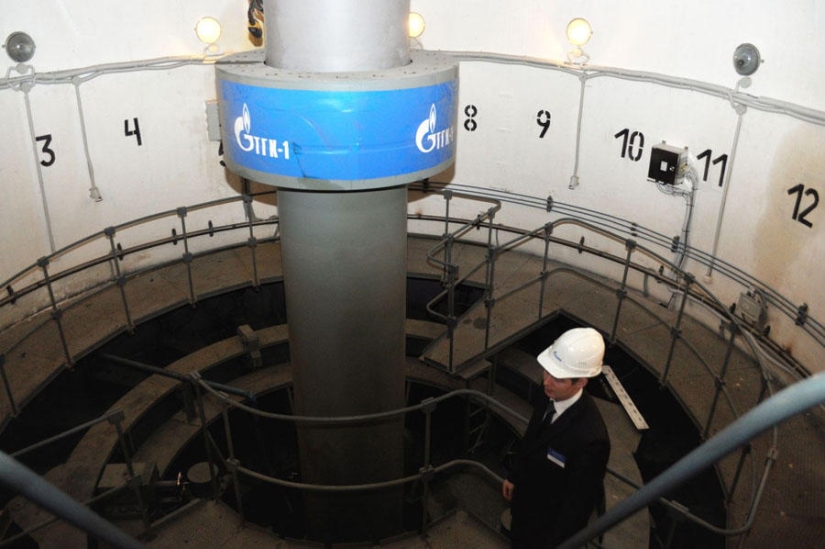 18. Vibration is not felt near the hydraulic unit. The fact is that it is completely controlled by the Bently Nevada vibration control system, which transmits the reading to the main control panel in real time. Any deviation from the vibration parameters will cause the generator to stop.
18. Vibration is not felt near the hydraulic unit. The fact is that it is completely controlled by the Bently Nevada vibration control system, which transmits the reading to the main control panel in real time. Any deviation from the vibration parameters will cause the generator to stop.
 19. The ceremonial start-up of the fourth unit of the Svetogorskaya HPP was made by Andrey Filippov, General Director of OAO TGC-1, and Andrey Gavrilov, Chairman of the Committee for the Fuel and Energy Complex of the Leningrad Region.
19. The ceremonial start-up of the fourth unit of the Svetogorskaya HPP was made by Andrey Filippov, General Director of OAO TGC-1, and Andrey Gavrilov, Chairman of the Committee for the Fuel and Energy Complex of the Leningrad Region.
 20. In real time, it was possible to observe how the unit accelerates and gains the necessary working power.
20. In real time, it was possible to observe how the unit accelerates and gains the necessary working power.
 21. In confirmation that the hydraulic unit is working well, coins were placed on its cap with an edge. They stood like that until all the participants and guests of the ceremony left the engine room.
21. In confirmation that the hydraulic unit is working well, coins were placed on its cap with an edge. They stood like that until all the participants and guests of the ceremony left the engine room.
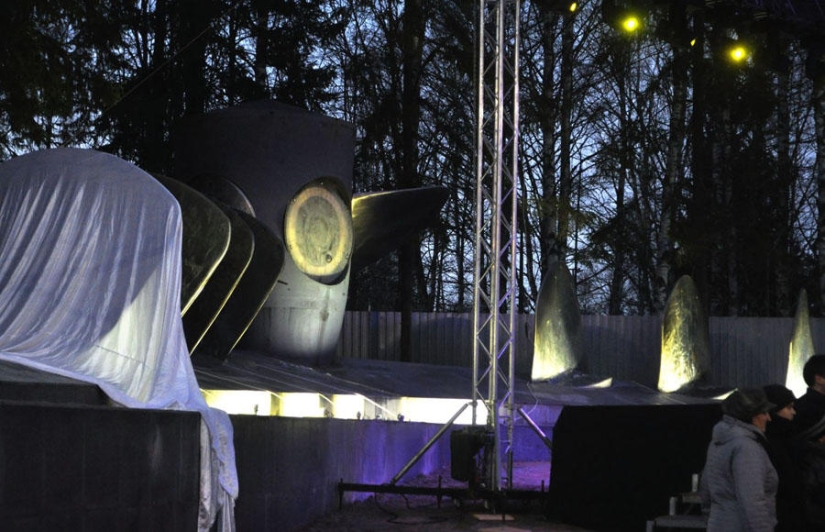 22. At a city holiday in Svetogorsk, the blade of the last dismantled hydroelectric unit, manufactured back in the 1930s and having worked for over 80 years, was installed on a monument dedicated to the reconstruction of the Vuoksinsky HPPs Cascade. It was opened in July 2010 and was completed along with the modernization of the stations of the cascade. Twice a year, on the day of the launch of new units, the blades of the replaced turbines were placed on the monument. Thus, today the history of all eight reconstructed machines is presented.
22. At a city holiday in Svetogorsk, the blade of the last dismantled hydroelectric unit, manufactured back in the 1930s and having worked for over 80 years, was installed on a monument dedicated to the reconstruction of the Vuoksinsky HPPs Cascade. It was opened in July 2010 and was completed along with the modernization of the stations of the cascade. Twice a year, on the day of the launch of new units, the blades of the replaced turbines were placed on the monument. Thus, today the history of all eight reconstructed machines is presented.
 23. It should be noted that the reconstruction project of the Vuoksa HPP Cascade is unique, since the hydroelectric units were replaced without stopping the operation of the stations and with the preservation of historical buildings. The installation of new equipment went without restructuring of hydraulic structures.
23. It should be noted that the reconstruction project of the Vuoksa HPP Cascade is unique, since the hydroelectric units were replaced without stopping the operation of the stations and with the preservation of historical buildings. The installation of new equipment went without restructuring of hydraulic structures.
Keywords: Leningrad region | Power | Reconstruction | Energy
Post News ArticleRecent articles

American Alex Greenberg, who moved to China, collects funny and brain-bearing examples of Chinese fashion in his Shanghai Observed ...

New Year is a holiday of magic and fulfillment of wishes. Naturally, I want this holiday to be remembered for a long time and to be ...
Related articles

Unusual Bolivia amazed by its traditions. There are women's fights, "cholita wrestling" — one of the most interesting and ...

This incredible car was created just one copy at the whim Rasta Heinz — the heir to the biggest American company for the ...

While much is known about such historical figures as King Louis XV, Emperor Napoleon Bonaparte and King Charles II, few people know ...

In a recent issue of sexual harassment on everyone's lips. Inappropriate and Intrusive signs of attention began to see around, even ...